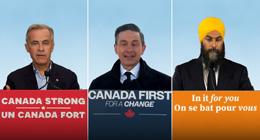Costly tax cuts do little for Canadians in need

Commentary
By David Macdonald
All major federal parties in Canada’s current election campaign are proposing some form of tax cut or increase in cash transfers to Canadians. These proposals could affect everything from your paycheque deductions to the benefits you receive, such as GST credits, child benefits or disability support. But you’d need to be an accountant to figure out how much you might benefit, if at all.
Campaign press releases often tout the maximum possible benefits, but only if you fit into a very specific box. In the case of both the Liberal and Conservative tax bracket cuts, just one per cent of tax filers would receive that maximum benefit. That’s because the gains are often unfairly distributed—those with the lowest incomes often get nothing, while those at the top can gain thousands.
As part of our election analysis, the Canadian Centre for Policy Alternatives cut through the clutter. We analyzed the proposals of all five parties for personal tax changes and cash transfers, measuring the average impact of each plan on 10 equally sized income groups, ranging from the poorest to the wealthiest, based on 2025 projections. This allowed us to assess how fairly each plan spreads the benefits.
The Greens’ plan would deliver the largest benefit by far—but only for upper-middle-income earners. They would receive over $3,000 per person on average, while lower-middle earners would get almost nothing. The plan comes with a steep price tag of over $60 billion a year.
The NDP’s plan is the most balanced, with both low- and high-income earners seeing average tax savings of about $600 per filer, except for the top one percent, who would pay more under a fairer capital gains tax. Increases to disability and low-income seniors’ benefits would particularly help those at the bottom. The plan would cost over $20 billion annually.
The Conservative plan delivers the largest gains to the top 10 percent of earners—more than $1,200 on average—while offering little to the lower-middle class and working poor. Their proposed cut to the bottom tax bracket disproportionately benefits the wealthy, since lower-income Canadians already pay little or no federal tax due to existing credits. Their plan to exempt capital gains on Canadian investments would overwhelmingly favour the wealthiest. The estimated cost is $15 billion in 2025.
The Liberal plan, like the Conservatives’, focuses on cutting the lowest tax bracket rate, though to a lesser degree. The effect is similar: the top half of tax filers get around $300 on average, while the bottom half get nothing. It’s the least expensive of the major plans at just over $5 billion, but still a significant cost.
When we zoom in on the poorest Canadians—those living below the poverty line—the contrast is sharp. On average, the Liberal plan provides $11 a year and the Conservative plan $33. The Green plan offers $123, but at a great fiscal cost. The NDP plan stands out, offering $690 on average to those in poverty.
These programs may sound generous, but they don’t come free. When governments spend billions on tax cuts or transfers, they often need to make up the difference through cuts to public services or by increasing other taxes.
Ultimately, while every party claims to support lower- and middle-income families, the numbers often tell a different story. And with costs this high, the question becomes: what gets cut to pay for it? Until fully costed platforms are released, we’re left guessing. But health care, education and other essential services could be on the chopping block. As always, it’s not just about what you might gain in average benefits—it’s also about what you could lose.
David Macdonald is a senior researcher with the Canadian Centre for Policy Alternatives.









